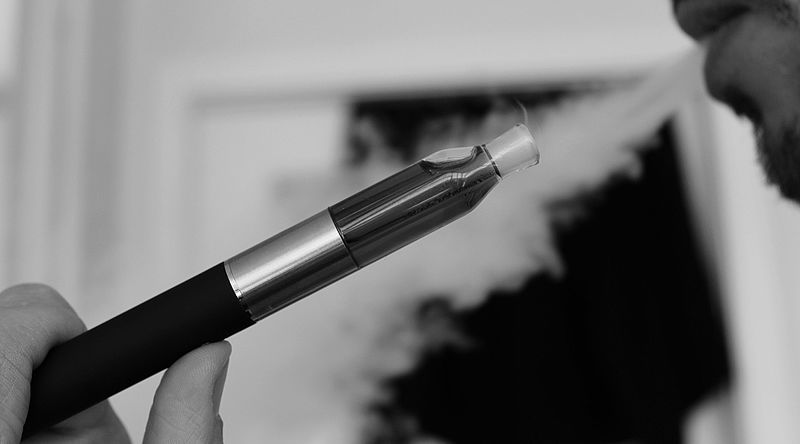E-Cigs aren’t as safe as you might think
September 18, 2018
The U.S. Food and Drug Administration declared youth vaping an epidemic last week. Over 2 million middle school, high school and college students vape or use electronic cigarettes or e-cigs. The agency says it will halt sales of the product if manufacturers cannot deliver a plan to prevent youth vaping. The numbers show many young people feel vaping is safe, but one should be mindful of getting hooked.
According to medicalnewstoday.com, e-cigarettes are “…a battery-operated device that emits doses of vaporized nicotine, or non-nicotine solutions, for the user to inhale.”
Perhaps the most common use for e-cigarettes is to help adults quit smoking. But popular companies such as Juul, Blu and Vuse market the product to a younger demographic by offering a multitude of flavored e-liquids such as mint, mango and fruit. Juuling is popular with teenagers as it is more portable and discreet than any other brands, which makes it easier to hide from parents and teachers.
The “fun” flavors and its stress-relieving capabilities make vaping an appealing hobby for many young people. But they often aren’t thinking of the damaging effects. Safer doesn’t mean safe.
E-cigarettes contain nicotine, a highly addictive substance that may contribute to heart disease as well as trigger changes in the adolescent brain. E-cigarettes also contain other damaging substances. An article on Scientific American’s website states nitrosamines, which have been linked to cancer, formaldehyde, a carcinogen or a substance known to cause cancer, and lead have all been found in the product.
The article goes on to state studies show “though the toxicant levels of e-cigs may be “9–450 times lower than in cigarette smoke… levels of formaldehyde and metals have been found to be comparable to or higher than those found in conventional cigarettes.* Silicate particles, which are a cause of lung disease, have also been found in e-cigarette vapors.”
Unless addiction, brain damage and cancer sound appealing, young people should be wary of picking up vaping as a hobby. Developing a nicotine addiction from vaping could put one at a greater risk of switching to cigarettes, the very thing vaping has been touted to help stop.
Yes, there are worse things teenagers and young adults could be doing. But that doesn’t take away from the negative effects vaping could have on one’s health long term. It’s important to not give in to peer pressure and learn as much as possible about the good and bad of vaping before starting the habit.
For those who currently vape and want to quit, joining a tobacco cessation program may be a good option. Because of the addictive nature of nicotine, a tobacco cessation program may address the “physical, psychological and sociocultural aspects of addiction,” according to Jennifer Folkenroth, the national director of tobacco control with the American Lung Association.
The College of DuPage, which has a smoke free policy that includes electronic cigarettes, also recommends several smoking cessation resources on its website, such as the American Lung Association’s website www.lungusa.org, American Heart Association’s website www.heart.org and the Illinois Tobacco Quitline: (866) 784-8937.




















